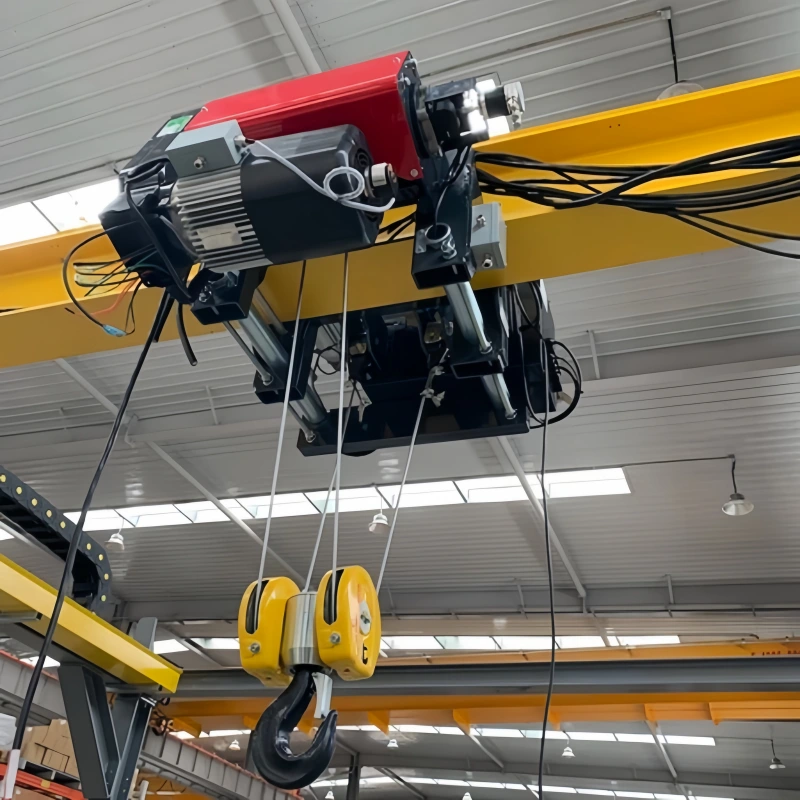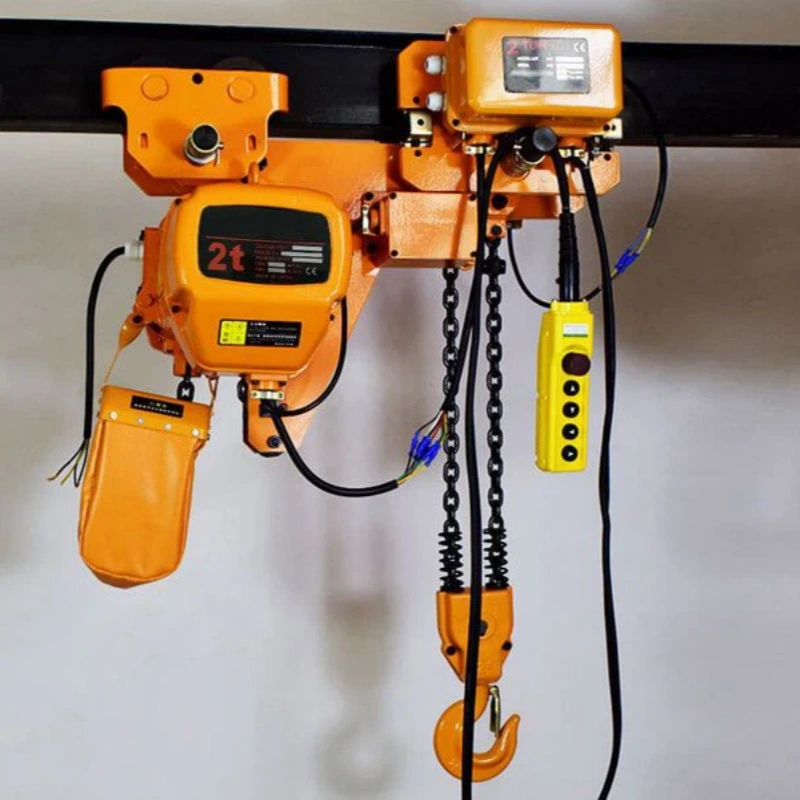To keep your vessel safe and reliable, it’s essential to perform regular anchor chain maintenance by inspecting and cleaning your anchor chain. This maintenance protects your anchor system from wear, corrosion, and unexpected damage.
The table below illustrates how key maintenance practices can significantly impact the longevity and reliability of your anchor chain:
Maintenance Practice | Impact on Longevity and Reliability |
|---|---|
Regular Inspection | Identifies wear, corrosion, and damage early to prevent larger issues. |
Cleaning and Lubrication | Removes salt and debris, extending the lifespan of the chain. |
Addressing Issues Immediately | Stops small problems from becoming major failures that threaten safety. |
Powerful Machinery provides certified anchor chains and studless anchor chains that are easy to maintain and comply with top safety standards. By following a step-by-step approach to anchor chain maintenance, you can ensure your anchor rode and chain remain in optimal condition for every journey.
Key Takeaways
Regularly inspect your anchor chain before every trip to catch wear and damage early.
Clean your anchor chain with freshwater after each use to prevent rust and extend its lifespan.
Use marine-grade lubricants to reduce friction and protect against moisture after cleaning.
Store your anchor chain properly in a dry area to avoid kinks and corrosion.
Follow a maintenance checklist to ensure thorough inspections and proper care of your anchor system.
Preparation for Anchor Chain Maintenance
Safety Measures
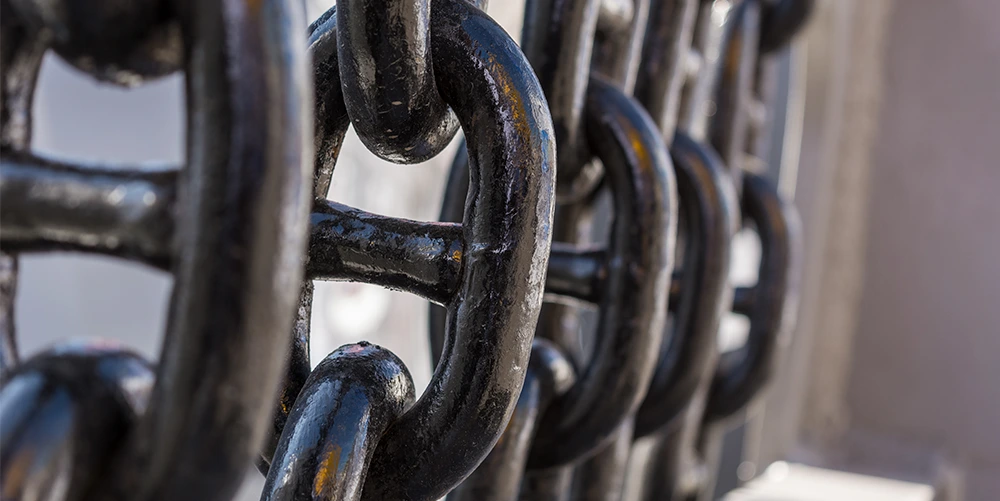
Before you begin anchor chain maintenance, always put safety first. Wear protective gear such as hard hats, gloves, safety boots, and eye protection. This gear shields you from sharp edges, falling objects, and chemical cleaners. Use a flashlight and inspection mirrors to check hidden parts of the chain.
Portable video scopes help you see hard-to-reach areas. If you need to check for internal flaws, use magnetic particle or ultrasonic crack detectors. Make sure your work area is dry and free from tripping hazards.
Tip: Always let someone know you are working on the anchor rode or chain. This step ensures help is available in case of an emergency.
Tools and Equipment
Gather all necessary tools before starting your inspection and cleaning. You will need:
Flashlight and inspection mirrors for a close look at every link.
Calipers and micrometers to measure link thickness and spot wear.
Brushes and rust removers to clean the chain.
Freshwater hose for rinsing off salt and debris.
Marine-safe lubricant or grease to protect against corrosion.
Portable video scope for inspecting tight spaces.
Magnetic particle or ultrasonic crack detector for advanced checks.
These tools help you find rust, cracks, or broken links. Powerful Machinery’s certified anchor chains are designed for easy handling, making the inspection process smoother and safer.
Chain Access Setup
Set up your workspace so you can access the entire anchor chain. Lay out the chain on a flat, stable surface. Make sure you have enough room to move and inspect each link. If your chain is long, work in sections to avoid tangling.
Keep cleaning supplies and tools within reach. Proper setup helps you spot issues early and keeps your anchor system reliable for every journey.
Anchor Chain Inspection Steps
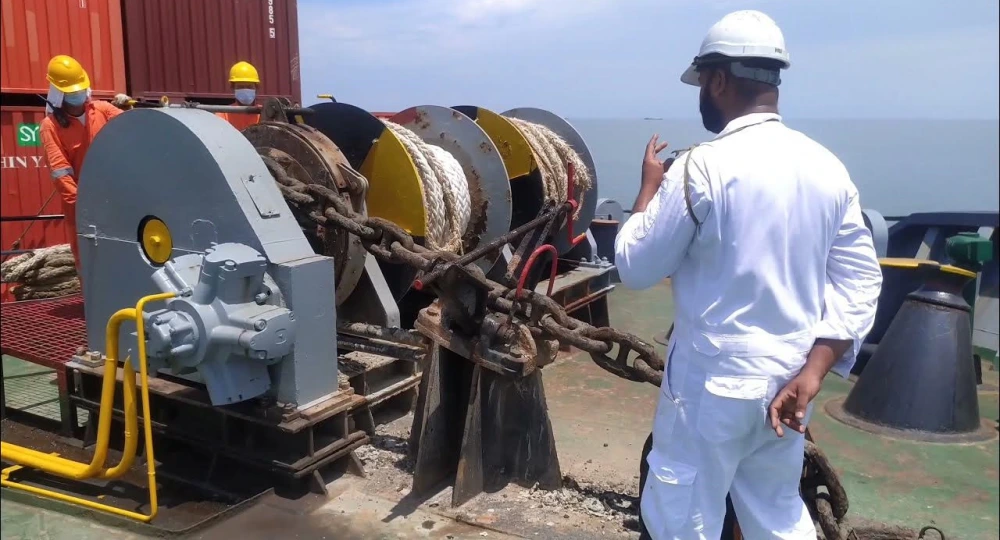
Proper anchor chain maintenance starts with a thorough inspection. You need to check every part of your anchor system to ensure safety and reliability before every voyage. Follow these steps to make sure your anchor, chain, and anchor rode are in top condition.
Visual Check
Start by laying out the entire chain on a flat surface. Use a flashlight and inspection mirror to see every link. Look for obvious signs of damage or wear. Marine safety organizations recommend the following process:
Range out the chain cables on the dock floor.
Visually inspect the cables for wear and damage.
Measure the link diameter with calipers or micrometers.
Note:
You should inspect 100% of the chain for missing studs, bent links, corrosion, sharp gouges, loose studs, cracks, and wear.
Check for these common visual indicators:
Rust spots
Pitting (small holes)
Cracks
Bent or misshapen links
Worn shackles
If you find any of these issues, mark the affected areas for further assessment. Powerful Machinery’s studless anchor chain makes this process easier because its flexible design allows you to lay out and inspect each link without difficulty.
Corrosion and Wear
Saltwater and harsh marine environments can cause corrosion and wear on your anchor chain. Examine each link for rust and thinning. Pay close attention to areas that look dull or have a reddish-brown color. These spots often signal corrosion.
Rust and corrosion weaken the metal and can shorten the life of your anchor chain.
Worn links appear thinner and may feel rough to the touch.
Bowed or bent links show that the chain has experienced mechanical stress.
You should also check for abrasion caused by dragging the anchor over rocks or sand. If you use both galvanized and stainless steel chains together, be aware that mixing these metals can increase corrosion rates.
In saltwater, the zinc coating on galvanized steel may corrode faster when in contact with stainless steel. Powerful Machinery’s studless anchor chain comes in galvanized and AISI 316 stainless steel options, both designed for high corrosion resistance and certified by RINA and BV for marine use.
Link and Shackle Assessment
After checking for corrosion and wear, focus on the links and shackles. Use calipers to measure the diameter of each link. Compare your measurements to the original specifications. If you notice any stretch or elongation, this could mean the chain has been overloaded.
Any amount of stretch is a sign of overloading. Remove the chain from service if you see this.
If elongation reaches 20% of the chain’s original size, you must replace the chain.
Always check the manufacturer’s guidelines for acceptable elongation limits.
Inspect shackles for wear, cracks, or deformation. Worn shackles can fail under load and put your vessel at risk. Replace any shackles that show signs of damage. Powerful Machinery’s anchor chains and accessories meet strict international standards, so you can trust their performance and safety.
Tip:
Regular inspection of your anchor, chain, and anchor rode helps you catch problems early and keeps your vessel secure.
Cleaning and Maintenance
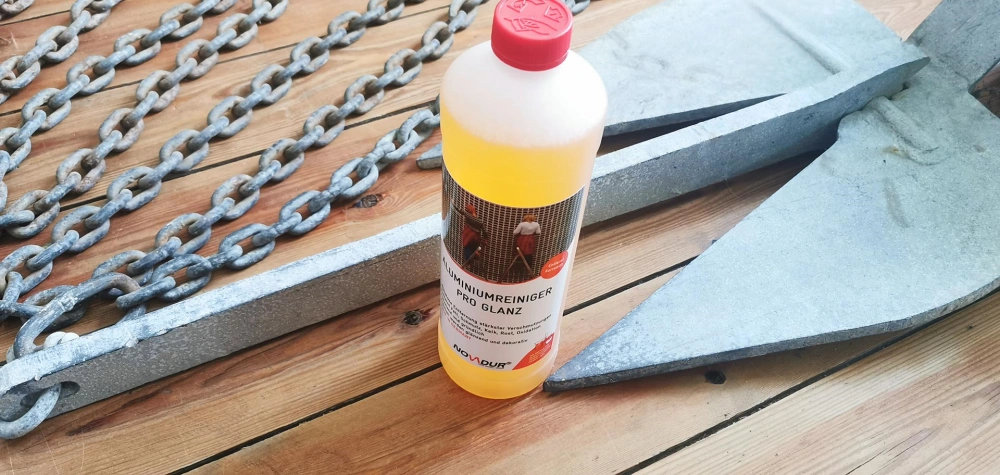
Keeping your anchor chain in top condition requires regular cleaning and proper care. This section guides you through the essential steps for effective anchor chain maintenance, helping you protect your anchor system and extend the life of your equipment.
Freshwater Rinse
After every use, rinse your anchor chain thoroughly with fresh water. Salt and marine debris left on the chain can cause rust and weaken the metal over time. Freshwater rinsing removes salt crystals and dirt that stick to the links.
Always rinse the chain immediately after weighing anchor. Let the chain dry in an open anchor locker to prevent moisture buildup.
Tip:
Freshwater rinsing is one of the simplest and most effective ways to prevent corrosion. Make it a habit after every trip.
Removing Debris
Marine growth, like barnacles, mussels, and algae, can attach to your anchor chain. These organisms add weight and can damage the chain’s surface. Use a stiff brush or a cleaning tool with flexible arms made from soft polyurethane. This material cleans tough marine growth without scratching coated surfaces.
For stubborn debris, scrub with a metal brush or use a diluted acidic cleaning agent. Mix one part acid with three parts fresh water to create a safe solution for removing rust and marine debris. Always rinse the chain with fresh water after using any cleaning agent.
Benefit | Description |
|---|---|
Flexibility | Cleaning arms conform to the shape of the chain links for thorough cleaning. |
Material Safety | Soft polyurethane does not damage protective coatings. |
Efficiency | Quickly removes tough marine growth like barnacles and mussels. |
Depth Performance | Works well at any depth, making it ideal for marine use. |
User Experience | Easy to use and effective, even in hard-to-reach areas. |
Rust Prevention
Rust can quickly shorten the lifespan of your anchor chain, especially in saltwater environments. Apply a rust inhibitor after cleaning and drying the chain. Hot dip galvanizing creates a thick zinc coating that shields steel from saltwater corrosion.
Products like Galv360 offer even stronger protection by forming a zinc/steel alloy with multiple layers. These coatings help prevent rust and keep your chain strong for longer.
Hot dip galvanizing slows rust formation and extends the life of steel chains.
Galv360 provides longer-lasting protection than traditional coatings.
Always check for worn or damaged coatings and reapply as needed.
Powerful Machinery’s galvanized and stainless steel anchor chains are designed for easy maintenance. The galvanized finish offers excellent corrosion resistance, while AISI 316 stainless steel chains provide superior protection in saltwater.
Stainless steel chains cost more but last longer and require less frequent maintenance.
Lubrication
Lubrication is a key part of anchor chain maintenance. Apply marine-safe grease or lubricant to the chain after cleaning and drying. Lubrication reduces friction between links, which helps the anchor deploy and retrieve smoothly. It also forms a barrier against moisture, preventing rust from forming.
Lubricate the chain regularly to maintain smooth operation.
Use marine-grade grease for the best results.
Lubrication extends the lifespan of your anchor chain and keeps your anchor system reliable.
Note:
Regular lubrication and protective coatings work together to keep your anchor rode and chain in peak condition.
By following these cleaning and maintenance steps, you protect your anchor, chain, and anchor system from damage. Powerful Machinery’s certified anchor chains, with their galvanized and stainless steel options, make maintenance easier and more effective.
Consistent care ensures your equipment stays strong and dependable for every voyage.
Preventive Maintenance Tips
Inspection Frequency
You should follow a regular schedule for anchor chain maintenance to keep your anchor system reliable. Marine industry guidelines recommend these inspection intervals:
Check your anchor and chain before every trip.
Perform a thorough inspection at least once a month during the boating season.
Complete a comprehensive inspection at the start and end of each boating season.
Inspect the chain immediately after severe weather or rough seas.
By sticking to this routine, you can catch problems early and avoid unexpected failures. Frequent inspections help you spot rust, wear, or damage before they becomes serious.
Storage Practices
Proper storage plays a big role in extending the life of your anchor chain. If you handle the chain carelessly, you might create kinks, twists, or even deform the links. These issues can lead to faster deterioration. Teach your crew the right way to handle and store the chain.
Use a chain locker to keep the chain neatly coiled and protected from damage. This method also helps prevent tangling and makes future inspections easier. Always make sure the anchor locker drains well and stays free of debris.
Tip: Store your anchor rode and chain in a dry, ventilated area to reduce moisture and prevent rust.
Maintenance Checklist
A detailed checklist helps you stay on top of anchor chain maintenance. Use the table below to guide your routine:
Item Description | Details |
|---|---|
Inspect chain links | Check all links and connection points for rust and damage. |
Cut bad links | Remove severely rusted links with a mini grinder. |
Ensure at least one boat length of chain is attached. | |
Inspect chain-to-rope splice | Look for moisture that could cause rust. |
Clean anchor locker | Rinse with freshwater to remove mud and sand. |
Check drainage | Make sure the locker drains freely and stays clear. |
Daily inspection | Regularly check the entire anchoring system. |
You should also check the alignment of the chain wheel, stopper, and guide roller. Test the windlass, oil friction surfaces, and apply anti-rust paint as needed.
Powerful Machinery offers certified and customizable anchor chains, which ensure long-term reliability and compliance with marine regulations. Choosing the right chain and following preventive maintenance steps will keep your anchor system strong for years.
Conclusion
You keep your anchor and anchor rode reliable by following regular inspection, cleaning, and proper storage. Certified, high-quality chains offer better strength, corrosion resistance, and safety than non-certified options.
Common mistakes include skipping inspections or using uncertified chains, so always follow manufacturer guidelines. When you make maintenance a habit, you help your vessel stay secure, prevent drifting, and handle harsh weather. Start your inspection and cleaning routine today for peace of mind on every trip.
FAQ
How often should you inspect your anchor chain?
You should inspect your anchor chain before every trip and perform a detailed check at least once a month. Always look for signs of rust, wear, or damage to keep your anchor system safe.
What is the best way to clean marine growth from your anchor chain?
Use a stiff brush or a cleaning tool with soft polyurethane arms. Scrub off barnacles, algae, and debris. Rinse the chain with fresh water after cleaning to remove any remaining particles.
Can you use any lubricant on your anchor chain?
You should use marine-grade grease or lubricant. These products protect against moisture and rust. Avoid regular household oils because they may not last in harsh marine environments.
How do you maintain the anchor rode for long-term reliability?
Rinse the anchor rode and chain with fresh water after each use. Store them in a dry, ventilated area. Regular cleaning and inspection help prevent rust and keep your anchoring system dependable.
What should you do if you find a damaged link or shackle?
Remove the damaged part right away. Replace it with a certified component that matches your chain’s specifications. Never use a chain or shackle that shows signs of cracks, stretching, or severe rust.

